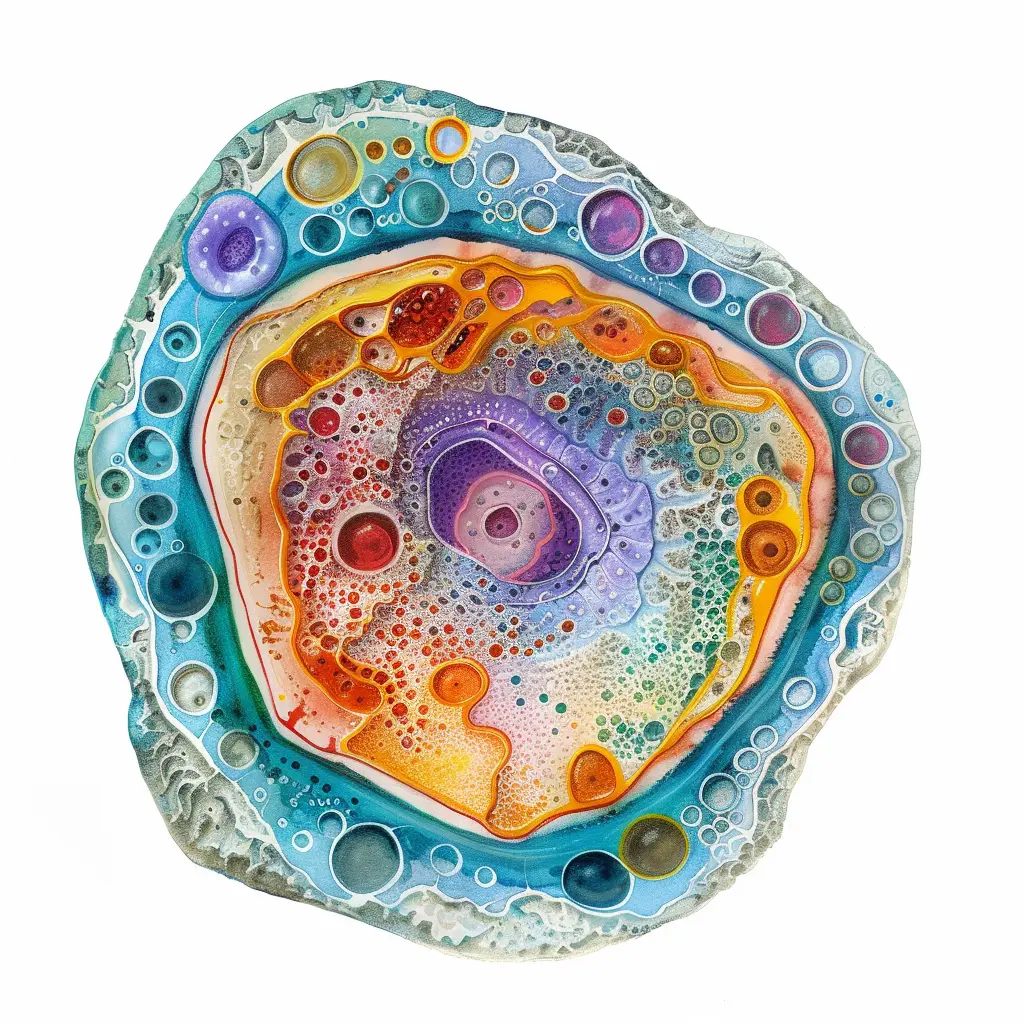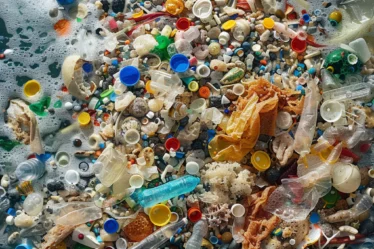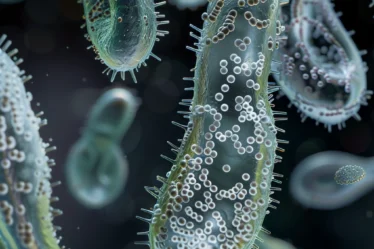
A warehouse sorts, labels, and ships packages to the right destinations. Inside a cell, the Golgi apparatus does the same with proteins. It modifies, organizes, and sends proteins where needed, ensuring the cell runs smoothly. Without this system, proteins would be unusable, and the cell couldn’t function.
This study guide explains the Golgi apparatus, its structure, function, and transport mechanisms. You will learn how it modifies proteins, sorts them into vesicles, and ships them to lysosomes, the plasma membrane, or outside the cell. The guide also covers transport models and the Golgi’s connection to the endoplasmic reticulum.
Golgi apparatus: Quick Summary
Do you just need the basics? Here’s a simple explanation of what is a Golgi apparatus:
🟠 The Golgi apparatus is a membrane-bound organelle that modifies, sorts, and packages proteins and lipids before they are sent to their destination inside or outside the cell.
🟠 Structure: It consists of flattened membrane sacs called cisternae, arranged in stacks with three main sections—cis face (entry), medial cisternae (processing), and trans face (exit).
🟠 Protein Processing: The Golgi modifies proteins by adding sugars (glycosylation), phosphate groups (phosphorylation), or sulfate groups (sulfation) to direct their function and destination.
🟠 Protein Transport: Once modified, proteins are packed into vesicles and sent to the plasma membrane (for secretion), lysosomes (for breakdown), or other organelles.
🟠 Vesicle Types: Exocytotic vesicles release proteins outside the cell, secretory vesicles store proteins until needed, and lysosomal vesicles transport enzymes to lysosomes.
🟠 Lipid Production: The Golgi modifies lipids like glycolipids (cell recognition) and sphingomyelin (nerve cell membranes).
🟠 Plant Cells: The Golgi produces polysaccharides like pectins and hemicellulose, which strengthen the cell wall and help bind cells together.
What Is the Golgi Apparatus?
Cells constantly produce proteins that need to be processed, packaged, and sent to the right place. The Golgi apparatus is the organelle responsible for this. It acts like a distribution center, modifying proteins and preparing them for delivery. Without it, proteins would not function properly, and cells would break down.
The Golgi apparatus is a membrane-bound organelle found in all eukaryotic cells. It sits near the nucleus and works closely with the endoplasmic reticulum (ER). It consists of flattened, stacked membranes called cisternae, arranged in a specific order:
- Cis face (entry): Receives proteins from the ER.
- Medial cisternae: Modifies proteins by adding sugars, phosphates, or sulfates.
- Trans face (exit): Packages proteins into vesicles and sends them to their destination.
The Golgi apparatus is present in animal, plant, and fungal cells, but its structure can vary slightly.
| Feature | Description |
| Location | Near ER and nucleus |
| Structure | Flattened, stacked membrane sacs (cisternae) |
| Function | Modifies and sorts proteins |
| Main Sections | Cis, medial, trans regions |
Structure of the Golgi Apparatus
The Golgi apparatus is a stack of flattened membranes called cisternae. These layers are connected by vesicles, which move proteins through the organelle. The Golgi is organized in a way that ensures proteins are processed step by step before they reach their destination.
How the Golgi Apparatus Is Built
The Golgi apparatus has two main sides:
- Cis face (entry): Faces the endoplasmic reticulum (ER) and receives proteins.
- Trans face (exit): Sorts and packages proteins for transport.
As proteins move through the cisternae, they are modified by enzymes that add or remove sugars, phosphates, or other molecules. These modifications determine where the proteins will go next.
Differences in Animal and Plant Cells
The Golgi apparatus looks different in animal and plant cells:
- Animal cells have one large Golgi near the nucleus.
- Plant cells have many smaller Golgi stacks spread throughout the cytoplasm.
In plant cells, the Golgi produces cell wall components like pectins and hemicellulose. In animal cells, it focuses on modifying proteins for secretion or membrane function.
How the Golgi Apparatus Modifies Proteins
Proteins must be processed before they can function properly. The Golgi apparatus acts like a workshop, making final adjustments to proteins before sending them to the right place. These modifications affect how proteins work, where they go, and interact with other molecules.
Steps of Protein Processing
Proteins arrive at the cis face of the Golgi apparatus from the endoplasmic reticulum (ER). As they move through the cisternae, they undergo specific chemical changes:
- Glycosylation: Adds sugar molecules. This helps proteins fold correctly and protects them from damage.
- Phosphorylation: Attaches phosphate groups, which control protein activity.
- Sulfation: Adds sulfate groups, affecting how proteins interact with other molecules.
Once modified, proteins reach the trans face, where they are sorted and prepared for transport.
How Proteins Are Packaged Into Vesicles
After processing, proteins are packed into vesicles and sent to their destination. The Trans Golgi Network (TGN) directs them based on their function:
- Lysosomes: Proteins that help break down waste.
- Plasma membrane: Proteins that become part of the cell surface.
- Secretion: Proteins like enzymes and hormones that are released outside the cell.
The Golgi apparatus ensures proteins are correctly modified and delivered where needed.
How the Golgi Apparatus Transports Proteins
The Golgi apparatus does more than modify proteins; it also ensures they get where they need to go. It packages proteins into vesicles, transporting them to different parts of the cell or outside. These vesicles act like delivery trucks, each carrying a specific type of cargo.
Three Main Transport Pathways Of Vesicles
The Golgi apparatus uses three main types of vesicles to move proteins:
- Exocytotic vesicles: Send proteins outside the cell. These vesicles fuse with the plasma membrane, releasing proteins like hormones and digestive enzymes.
- Secretory vesicles: Store proteins inside the cell until they are needed. For example, neurons release neurotransmitters from these vesicles when sending signals.
- Lysosomal vesicles: Carry proteins to lysosomes, where they help break down and recycle cellular waste.
The Golgi and the Endomembrane System
The Golgi apparatus works with the endoplasmic reticulum (ER), lysosomes, and the plasma membrane to move proteins efficiently. It relies on coated vesicles, which help direct proteins to their correct location:
- COPI vesicles: Move proteins between different parts of the Golgi and return some back to the ER.
- COPII vesicles: Transport newly made proteins from the ER to the Golgi for processing.
These transport systems keep the cell organized and ensure proteins are sent exactly where needed.
Theories of Protein Transport in the Golgi
Proteins must move through the Golgi apparatus to be processed and sent to their destination. Scientists have proposed several models to explain how this happens. Each model suggests a different way proteins travel from the cis face (entry) to the trans face (exit).
Vesicular Transport Model
This model suggests that the cisternae stay in place while small vesicles carry proteins between them. Vesicles form at one cisterna, transport cargo, and fuse with the next layer. COPI vesicles move proteins between Golgi stacks, while COPII vesicles bring new proteins from the ER to the cis face.
Cisternal Maturation Model
In this model, the cisternae themselves move through the Golgi. Proteins do not travel in vesicles; instead, each cisterna shifts forward, changing its enzymes as it moves. The cis face matures into a medial cisterna, then into the trans face, which eventually breaks into vesicles.
Rapid Partitioning Model
This model suggests the Golgi functions as a dynamic unit with different processing zones. Instead of moving through layers, proteins distribute into specialized areas within the Golgi, where they undergo modifications before being sorted for transport.
Scientists continue studying these models to better explain how the Golgi apparatus organizes protein transport.
Lipid and Polysaccharide Processing in the Golgi
The Golgi apparatus does more than process proteins. It also produces lipids and polysaccharides that help form cell membranes and structural components, especially in plant cells. These molecules support cell stability, communication, and protection.
How the Golgi Makes Lipids
The Golgi apparatus modifies lipids made in the endoplasmic reticulum (ER) to produce:
- Glycolipids: Lipids with attached sugars that help cells recognize and communicate with each other.
- Sphingomyelin: A lipid found in animal cell membranes, especially in nerve cells, where it helps with insulation and signal transmission.
Both are made from ceramide, which enzymes in the Golgi convert into either glycolipids or sphingomyelin. These lipids are then sent to the plasma membrane or other organelles.
Golgi’s Role in Plant Cells
In plant cells, the Golgi apparatus produces pectins and hemicellulose, essential parts of the cell wall:
- Pectins make the cell wall flexible and help cells stick together.
- Hemicellulose strengthens the wall and connects it to cellulose fibers.
These polysaccharides are packaged into vesicles and transported to the plasma membrane, where they are used to maintain and grow the cell wall.
The Golgi Apparatus in Different Organisms
The Golgi apparatus exists in all eukaryotic cells, but its structure and organization vary. These differences affect how proteins, lipids, and carbohydrates are processed and distributed.
Golgi in Yeast, Plants, and Animals
- Animal cells: Contain a single, large Golgi apparatus near the nucleus. It processes proteins and lipids and sends them to the cell membrane, lysosomes, or outside the cel.
- Plant cells: Have many smaller Golgi stacks scattered throughout the cytoplasm. These Golgi stacks produce cell wall materials, including pectins and hemicellulose.
- Yeast cells: Contain multiple small Golgi compartments instead of one central organelle. Each compartment processes proteins separately before sending them to their destinations.
Despite these structural differences, the Golgi apparatus performs the same essential task in all eukaryotic cells—modifying, sorting, and packaging proteins and other molecules for transport.
Need Help with the Golgi Apparatus? Get Clear, Step-by-Step Tutoring
Struggling with how the Golgi apparatus sorts, modifies, and ships proteins? You’re not alone. Many students get confused about cis and trans faces, vesicle transport, and protein processing. A private biology tutor in Birmingham or tutoring chemistry in Sheffield can walk you through it in a way that makes sense.
In one-on-one lessons, you’ll see exactly how proteins move through the Golgi, how glycosylation and phosphorylation change them, and why vesicles send proteins to different destinations. Your tutor will break it down into simple steps, ensuring you get it before moving on.
If you’re prepping for A-levels or AP Biology, a biology tutor in Manchester or private chemistry tutor in London can help you tackle exam questions and give you tips that work. No more memorizing without understanding!
Get the help you need with friendly, customized tutoring—whether for a test or just to finally make sense of your notes. Book a lesson today on meet’n’learn and feel more confident about cell biology!
Looking for more resources? Check out our Biology blogs for additional learning material. If you’re ready for extra help, a tutor can guide you through the most challenging topics with clarity and patience.
Golgi apparatus: Frequently Asked Questions
1. What is the Golgi apparatus?
The Golgi apparatus is a membrane-bound organelle in eukaryotic cells that modifies, sorts, and packages proteins and lipids for transport.
2. Where is the Golgi apparatus located?
The Golgi apparatus is found near the nucleus and endoplasmic reticulum (ER), where it receives proteins for processing.
3. What are the main parts of the Golgi apparatus?
The Golgi apparatus consists of stacked cisternae divided into three sections: cis face (entry), medial cisternae (processing), and trans face (exit).
4. How does the Golgi apparatus modify proteins?
The Golgi apparatus adds sugars (glycosylation), phosphate groups (phosphorylation), and sulfate groups (sulfation) to proteins as they pass through the cisternae.
5. How do proteins travel through the Golgi apparatus?
Proteins move through the Golgi apparatus by vesicular transport, cisternal maturation, or rapid partitioning, depending on the model used to explain transport.
6. How does the Golgi apparatus package proteins?
The Golgi apparatus sorts proteins into vesicles, which deliver them to the plasma membrane, lysosomes, or outside the cell.
7. What does the Golgi apparatus produce besides proteins?
The Golgi apparatus produces glycolipids, sphingomyelin, pectins, and hemicellulose, which contribute to membranes and plant cell walls.
8. How does the Golgi apparatus differ in animal, plant, and yeast cells?
Animal cells have one large Golgi, plant cells have many smaller Golgi stacks, and yeast cells have scattered Golgi compartments that function independently.
Sources:
1. NCBI
2. Britannica
3. Wikipedia



